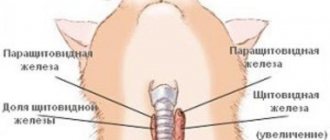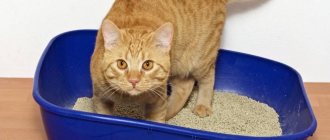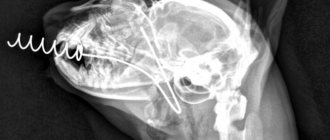Spaying and neutering a cat is common. Most owners and pets go through this procedure. However, sometimes some consequences of the operation develop. Unexpected symptoms that baffle the owners of little friends. One of these symptoms and deviations is that a neutered cat began to pee anywhere . After searching the Internet, many of them begin to treat themselves. This is completely wrong, because there is a risk of making the cat worse. Only an experienced veterinarian is able to make a diagnosis and determine the appropriate course of treatment.
Our veterinary has several strongholds in Moscow and the Moscow region. An experienced veterinarian will help and tell you what to do in a situation where cats begin to urinate after castration. To begin with, the doctor will consult by phone, and then arrive in less than 40 minutes! The YA-VET veterinary clinic is open 24 hours a day, so call at any time of the day or night. The doctor writes the required course of treatment on the spot.
In this article we will look at the main reasons and reasons why a cat urinates after surgery . We will also learn the treatment methods that you may encounter, but in no case should you use these methods without proper consultation.
Why did a neutered cat start peeing anywhere?
A castrated cat marks his territory . This is commonplace and far from a revelation. Don’t despair and panic; you need to determine the cause and understand how to deal with the situation. After all, curing the disease is simple. There are many reasons, but it is important not to swear at the cat
and do not punish him, this will cause unnecessary stress and anxiety for the pet and will only worsen the situation.
The cat does this based on the instincts and genes
embedded in it. The pet does this during puberty.
Whatever the reason, the first thing here is the desire to mark the territory and show the rights to the land and apartment. This way the cat gets rid of competitors during puberty. Shows that the property here is his and uninvited guests should not interfere.
There are rumors and opinions that if castration surgery is performed at an early age, about six months, the problem will disappear. However, some owners confirm that such a problem develops at any age and does not go away unless measures and solutions are taken.
Reasons why a neutered cat started peeing anywhere
Very often everything goes fine even after castration. The cat is litter box trained and knows where to go to the toilet. But at one point the cat begins to leave urine in places where this should not be done and where the pet has never done this. For example, puddles often appear near the sofa, very close to the tray, near the owner’s shoes and in other places. Often the places can be secluded, for example, behind a sofa or closet. It is worth noting that this also applies to cats; sometimes females can also mark their territory and show reluctance to see strangers within its boundaries.
First of all, the owners begin to swear at the pet, scold it and try to wean it from the habit using aggressive methods. All this makes the situation worse
due to the cat's stress and anxiety. Moreover, the pet takes offense at its owners. After all, the cat doesn’t do anything bad on purpose and doesn’t want to do anything bad. At first he doesn’t take revenge and does it because of his genes, but then a stage may begin when he will simply specifically do things where you least expect and would like to see. On the bed, for example. Therefore, you can’t swear, but we’ll talk about treatment methods a little later, and now we’ll look at the reasons.
There are many reasons for the disease in cats, let’s look at the most common ones. However, it is worth remembering that the final diagnosis must be made by a doctor
, because your pet may have a unique case that therefore requires a unique course of treatment. We will also dispel some myths that relate to the causes of urination, and consider other reasons why a cat refuses to go to the litter box:
Myths and additional reasons why a neutered cat began to pee anywhere
1Marking places: this is the most common reason, about which a few words have already been said.
It is mainly males who mark the territory, but females can also in some cases. This also applies to castrated animals. If we are talking about the male sex, then males mark territory on vertical surfaces. And it doesn’t matter so much whether it’s a wall or curtains. Females leave small puddles on the floor throughout the apartment.
2 Other situations: cats are very sensitive and have a good memory, so it happens that he will not have the best association with the litter box. In this case, the cat will start walking around, but will not come close to the litter box. Then you should buy a new one and try to teach the cat to use it. Also, do not allow, for example, children or another pet (especially a dog) to drive the cat out of the litter box, because this may end in the same stress and reluctance to go there again. 3The situation in the home and family: it has been said more than once that a pet is a member of the family and a large part of it. Therefore, any stressful event affects the cat. For example, one of the family members left home forever, you yelled at the cat or even not at him, you accidentally kicked him out of the litter box, or you broadcast a loud noise on TV. All this can affect his psyche, especially if it concerns a move or a long absence of the owner. A bad mood has a bad effect on all animals, and even more so on cats.
Strange animals or guests
: If you already have a cat and the family decides to get another pet, then the old family member may be against it. The protest consists precisely in marking the territory and protecting it. Therefore, at first you will have to endure the fact that the old-timer does not want to get along with the new pet. However, after some time this will pass and the cat can become very good friends with the new inhabitant.
This also applies to guests or relatives. After all, this is something new for the pet, which means it will be wary. This works most of the time, but sometimes cats can be curious and friendly.
4 Late castration: marking territory in this case is simply a habit for the cat and it does it out of instinct and automatically. The cat gets rid of this behavior only after some time, for example, after 4-5 months, when a long period of time has passed since castration. The habit can disappear either on its own or after several methods, which we will describe further.
Reasons why a cat walks past the toilet - a neutered cat began to pee anywhere
Here are some reasons why a cat walks past the toilet and castration does not play any role:
5Disease: first of all, it is worth ruling out diseases. Some of them can lead to frequent urination, which is often not to mark territory, but is simply uncontrollable and can happen at any time. An increase in urine can lead to more negative consequences.
Due to some diseases, such as cistritis or urethritis, the animal goes to the toilet in small portions. However, he still does it in the tray if he manages to get there. The reason for improper use of the tray can be various allergies, diabetes or hepatitis. Check with your doctor for a more accurate list of illnesses, because in each case everything is individual.
6Age of the cat: the age of the cat does not always affect the marking of the territory and problems after castration. So, for example, if a kitten is less than six months old, he may simply forget or make mistakes, because the kitten is still a child and this is natural for him. Also, if the cat is already old, he may have a disorder due to old age. Vision is lost, paws begin to ache and ache, and then it does this completely unconsciously; sometimes the cat is not even able to climb onto the tray due to sore joints. 7The condition of the litter box itself: I doubt that you would want to go to a dirty and unkempt toilet. It’s the same for cats, only here it’s even more difficult. The tray is perfectly clean, but washed with strong chemicals. Due to the strong smell, the cat will not want to use the toilet. If you wash the tray, then you should make do with ordinary clean water and only as a last resort use a drop of baby liquid soap or special products, but not household chemicals.
It is better to choose odorless filler
, and if with a smell, then it’s better to have one that your cat already knows. After all, these animals are very sensitive to smells and cats are unlikely to tolerate anything new in the litter box.
Also, due to the fact that the kitten has grown into a cat, using the tray is difficult due to its size
. Choose full-size trays.
Consequences of anesthesia
Anesthesia of any type has a sedative effect on the nervous and muscular system. While your pet sleeps during and after surgery, he cannot control his urges. Involuntary may be:
- Vomiting - to prevent the cat from choking on the vomit and getting it into the respiratory tract, the four-legged cat should lie on its side. Most veterinarians will restrain animals on their backs (during surgery), but in this case, the owner is asked not to feed the pet for 10-12 hours before surgery. Some veterinarians operate on cats in the lateral position, which reduces the risk of vomiting, but impairs the surgeon’s visibility.
- Urination - during the operation, the cat is on a moisture-absorbing diaper, since the fasting diet before the operation does not imply water restriction. Sometimes doctors recommend not giving the cat water 2-3 hours before castration, but this is not entirely correct. Anesthesia is fraught with dehydration and the milder its degree, the easier the rehabilitation will be in the first hours.
- Defecation – the intestines can remain full for up to 8–10 hours after eating. If the cat is kept on a starvation diet, defecation may not occur until anesthesia is administered. Of course, such a surprise is a little unpleasant, but there is nothing unnatural about it.
Note! If you hold your cat while he is under anesthesia, be prepared for your clothes to get dirty.
In recent years, the need for a fasting diet for 12 hours before and after surgery has often been disputed. Veterinarians say that forced fasting for 24 hours leads to a slowdown in metabolism and sometimes irreversible consequences. A decrease in immune defense against the background of a slower metabolism has a negative effect.
Treatment and what to do if a neutered cat starts peeing anywhere
The most popular and proven method here is to buy a large number of trays
. They are placed where the cat most often marks his territory and pees. The trays should be of different sizes, the sides should be of different heights, and the filling should be neutral and also different. If the cat does not sit in the tray. and walks nearby, then it’s worth changing the filler and trays. At one point, you will most likely notice how the pet scratches on the floor and meows. This is a signal that the pet wants to go to the toilet and litter tray, but does not understand how to go. In this case, it is enough to just be affectionate and put him in the tray yourself, while petting him and saying kind words.
This procedure should be done only after sterile treatment of all places where the pet has gone before.
. After all, for a cat, the toilet is where it has already gone, where there is smell and signs. It is necessary to wash without bleach or dangerous chemicals, because this can only harm the cat, who will still walk in familiar places for some time. However, over time, he will forget about them and get used to the trays placed around the territory. And after that, he will choose one tray for himself and go to it.
It is recommended not to move this tray anywhere and just let the cat choose the place where he wants to go.
.
If you couldn’t get rid of the smell and the cat is still marking for a month or more, you should clean it better and put something nearby that emits a light aroma. For example, citrus peels
. This is safe for the cat and will help fight off the smell.
Another option is to look at the barricades of those places that the cat has chosen. Cover the places with boxes and make the conditions as uncomfortable as possible. If the cat is neutered and has chosen the bed
, then you should use polyethylene and double tape, which will scare the pet and the cat will no longer return to this place.
In this matter, the main thing is patience and affection. You can't yell at your pet, you can't swear at him. Also, do not diagnose yourself. As we have already found out, there are many reasons and this is far from marking the territory. Also, castration is not the only reason. Therefore, it is recommended to call a veterinarian at home to examine and give a verdict. There is no point in taking your pet to the clinic in such a situation. This is extra stress for the pet, and the doctor simply will not see the places that the cat likes. He will not understand the behavior and is unlikely to make a correct diagnosis. The pet must be examined directly in the apartment.
Sprays to stop a cat from walking past the litter box
Quite a few pet owners use repellent scents. The drugs stop you from writing in the wrong places.
Spray “Mr.Fresh weaning off shitting”
This product will effectively help stop cats from crapping. The action is manifested in the following features:
- eliminating unpleasant odors;
- adjusting your pet's behavior;
- completely weaned from walking past the toilet.
Includes:
- Methyl nonyl ketone. It has a deterrent effect without causing discomfort to people.
- Perfume scent "Orange". Gives a pleasant aroma and completely neutralizes unpleasant odors.
- Sagebrush. Has an unpleasant taste, helps to scare the cat away from a secluded corner to pee.
Directions for use: shake the bottle and apply to the area of interest to the cat from a distance of 30 cm. Repeat the procedure 2 times a day.
Volume: 200 milliliters.
Means with a repellent odor “Ms Kiss for weaning off shitting”
The spray is suitable for all surfaces and has no color. The product is used to wean cats from shitting in inappropriate places and from marking their territory. Use once a day. Valid for 3 days, can be applied to any surface.
Ingredients: water, solvents, fragrance, preservatives, emulsifier, dinatonium benzoate.
Volume: 200 milliliters.
Price: 140 rubles.
Important! The effectiveness of sprays depends on the frequency and selection of the correct location for use. Patience and an integrated approach will solve the problem of cats peeing in the wrong places.
Behavioral factor
One of the reasons that the cat began to walk past the tray is a feeling of disgust towards the tray. Since animals are by nature very clean and picky regarding personal hygiene, the slightest violation in the organization of the toilet can lead to fatal consequences.
The cat will develop a reflexive type of behavior, and isolated “misses” will develop into a stable habit of walking anywhere. What could she not like?
- Type of filler. For inexplicable reasons, cats react normally to some fillers, while others completely ignore them, regardless of the brand of the manufacturer and the price of the product. Alternatively, the granules may stick to the paws, have an unpleasant odor, cause allergies, etc.
- Tray size and shape. For example, too tight, uncomfortable or with insufficiently high/low sides. Some cats prefer to sit in round-shaped boxes, refusing to pee in standard rectangular trays.
- Tray instability. If the container sways and stands precariously on the floor, this causes anxiety in the animal, and it tries to quickly finish its business and jump out of the tray. Subsequently, the instinct of self-preservation kicks in, and the purr looks for another place for the toilet.
- Tray location. The appearance of a washing machine, a broom, new furniture and other irritating objects in the bathroom causes discomfort, and in some cases, fear of entering the room. The pet begins to get nervous and choose a more secluded area to “sit down.”
- Dirty tray. Often cats refuse to go into an unwashed (or insufficiently washed, in their opinion) litter box.
In such cases, you need to be patient and try to create the most favorable conditions for the cat to go to the toilet. Here are some effective recommendations:
- Place several trays with different fillings nearby and one completely empty. Moreover, they must differ in size, shape, and height of the sides. Observe which one the animal chooses, and when it goes there regularly, quietly remove all other containers. Often, cats prefer fine-grained litter that has good flowability - you can rummage in it before urinating.
- Use two trays at the same time: the cat will pee in one and poop in the other.
- Buy a closed tray-house or make your own structure from a cardboard box with a slot for entry.
- Clean the litter box thoroughly after every trip to the toilet. To eliminate odor, it is advisable to wash cat accessories not with warm or hot water, but with running cold water.
- Provide 24-hour access to the toilet. The door to the bathroom should always be open or half-open so that the pet can easily get to the tray.
Territory designation
At the age of 6-8 months, cats reach puberty, and the reproductive instinct makes itself felt with characteristic signs: loud meowing and guttural screams, changes in behavior (excessive affection or aggressiveness), as well as marking of territory. Urine is used by animals as a way to attract a mate and let him know that they are willing to mate.
The soiling of furniture, curtains, clothes, the owner's slippers and other household items indicates that sexual hunting has begun. By means of secreted pheromones, females notify males that they are ready to reproduce, and males scare away other cats, letting them know that entry into someone else’s territory is prohibited. The marking process goes like this: the animal approaches a vertical surface (wall, door, furniture) with its back, raises its tail and leaves stinking marks on the surface with stunning movements.
It is useless to go against nature, so no educational measures or persuasion will help to reason with the cat so that he does not pee anywhere. In such a situation, three options are possible:
- Realize natural instinct and mate animals. It makes sense when there is an opportunity to place the kittens in good hands in the future or sell them if the parents are purebred. It is worth considering that frequent mating undermines the health of cats, and cats only temporarily stop marking the apartment.
- Castration/sterilization. A surgical solution to the problem is a fairly common method of contraception. The operation involves the removal of the gonads and, as a result, the animal’s sexual activity is suppressed or completely stopped. It is performed under general anesthesia in a veterinary clinic. After surgery, you will no longer need to try to wean your cat from peeing in the wrong place - they lose interest in the opposite sex, become obedient, affectionate and do not mark in the house.
- Taking hormonal drugs. There are many pros and cons for this method, so the decision to use oral contraceptives is made individually by the cat owner. Sterilization surgery may be contraindicated due to the animal’s advanced age, various injuries and health problems.
How to stop a cat from walking past the toilet
If the cat starts peeing anywhere, veterinarians recommend:
- Thoroughly wash soiled areas with disinfectants. Animals have an excellent sense of smell, so the remaining smell will attract them to mess up again and again.
- Place strong-smelling spices (pepper, cloves, cardamom) or orange peels on “problem” areas. The pungent aroma should stop the cat from urinating in the same place.
- Place double-sided tape on the floor/furniture/table and other household items that are within your pet’s circle of “interests”. He will be uncomfortable and afraid to step on the sticky surface, which means that the desire to mark the territory there will disappear.
- Place a bowl of food where the cat gets into the habit of going to the toilet. Animal psychology is designed in such a way that they always urinate and eat in different places.
- Use special sprays that are sold in pet stores. They discourage cats from defecating outside the litter box.
- Wipe the cat's face with a rag, and then wipe the surface where he got into the habit of shitting with the same cloth. Approaching the place of his “crimes,” the pet will hear its own smell and will not want to urinate there.
- During periods of long absence, leave a spare tray. If the main litter box becomes so dirty that your cat starts to ignore it, she can switch to a clean box.
And the most important thing to remember is no assault or rude attitude. Physical impact can have the opposite effect, and the animal will simply begin to take revenge. More affection, attention and patience, and it is likely that the cat will quickly accept the established rules and try not to break them.
Re-education of kittens
Raising a new pet should begin from a very young age. If you do not teach a kitten to go to the litter box as a child, then retraining an adult will be extremely problematic, and professional help may be required.
During litter training, you need to treat the kitten kindly
As soon as a kitten appears in the house and goes to the toilet on the floor, it cannot be scolded. It is necessary to thoroughly wipe the area of the puddle so that no traces of the unpleasant specific odor remain. Here you need to install the first tray, which will not be difficult to climb into.
The next time the animal starts to worry and look for a secluded corner to relieve itself. We need to help him. Carefully pick him up and take him to the place where the tray is located. Pet and calm the animal so that it does not feel afraid. If you use the right re-education methods at an early age, there will be no toilet problems in the future.
Helpful advice! In the first few days of training, it is not recommended to wash the tray; it is better to tolerate unpleasant odors. The kitten will be able to find its toilet faster.
If a small pet went to the litter box once and went to poop near the door or found another secluded corner, then he needs to buy a second cat litter box. It often happens with cats that they cannot do both in one place. You shouldn’t scold them for this, just put a new tray where your pet goes for other things.
It is very important to encourage a little kitten when he goes to his toilet instead of on the floor. You need to play with the animal, pet it and simply verbally thank it - they feel a kind tone and understand what is wanted from them.
Training your pet to go to the toilet is not difficult if you do it from childhood. In adulthood, retraining will take a lot of time and effort from the owner. Retraining methods are generally similar, but it is worth remembering that each cat requires an individual approach. You can’t expose cats to stress, beat them or yell at them for misdeeds. Love, affection and patience will help you overcome all difficulties.
Health problems
Various diseases of the genitourinary system and gastrointestinal tract may well be the reason that the cat began to pee anywhere. Many breeds have a genetic predisposition to urolithiasis, especially if you feed your pet cheap dry food. It is quite easy to determine that urination is causing pain to your cat. She becomes fussy, nervous, hesitates for a long time to approach the tray, and meows pitifully. Having jumped into the toilet, he does not urinate at full strength, squatting on his hind legs and pressing against the walls of the box. Or, on the contrary, he tries to do everything in an unnatural standing position. The latter option is typical for exacerbations of cystitis.
Over time, the animal develops an association that the litter box is pain. This means you need to look for another place. The choice falls on something soft, cozy and safe - for example, a bed, sofa covers, pillows, carpets, etc. Urinary incontinence can also be associated with dysfunction of the bladder sphincter, as well as constipation and cysts in the anal area, which serve as pain provocateurs.
In addition to the above reasons, problems with urination may be associated with the following factors:
- liver and kidney diseases;
- digestive system dysfunction;
- infectious diseases;
- inflammatory processes of internal organs;
- allergic reactions to certain foods;
- neurological disorders;
- progressive rheumatoid arthritis, etc.
In any case, when there are suspicions of any health abnormalities, it is necessary to contact a veterinarian and make the appropriate diagnosis. As a rule, blood, urine and stool tests are taken, and an ultrasound of the abdominal cavity is performed to make a diagnosis and prescribe a treatment regimen.











